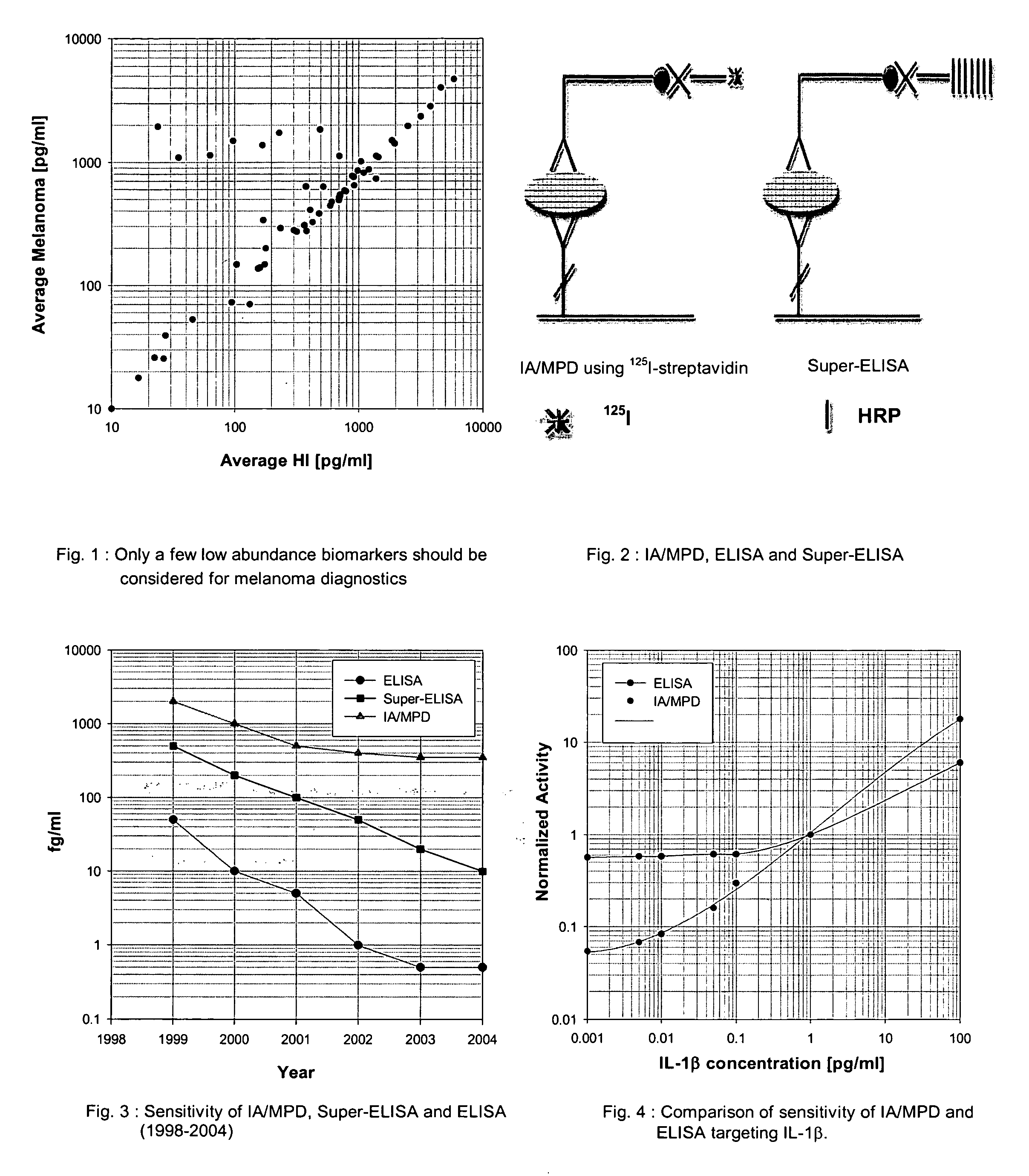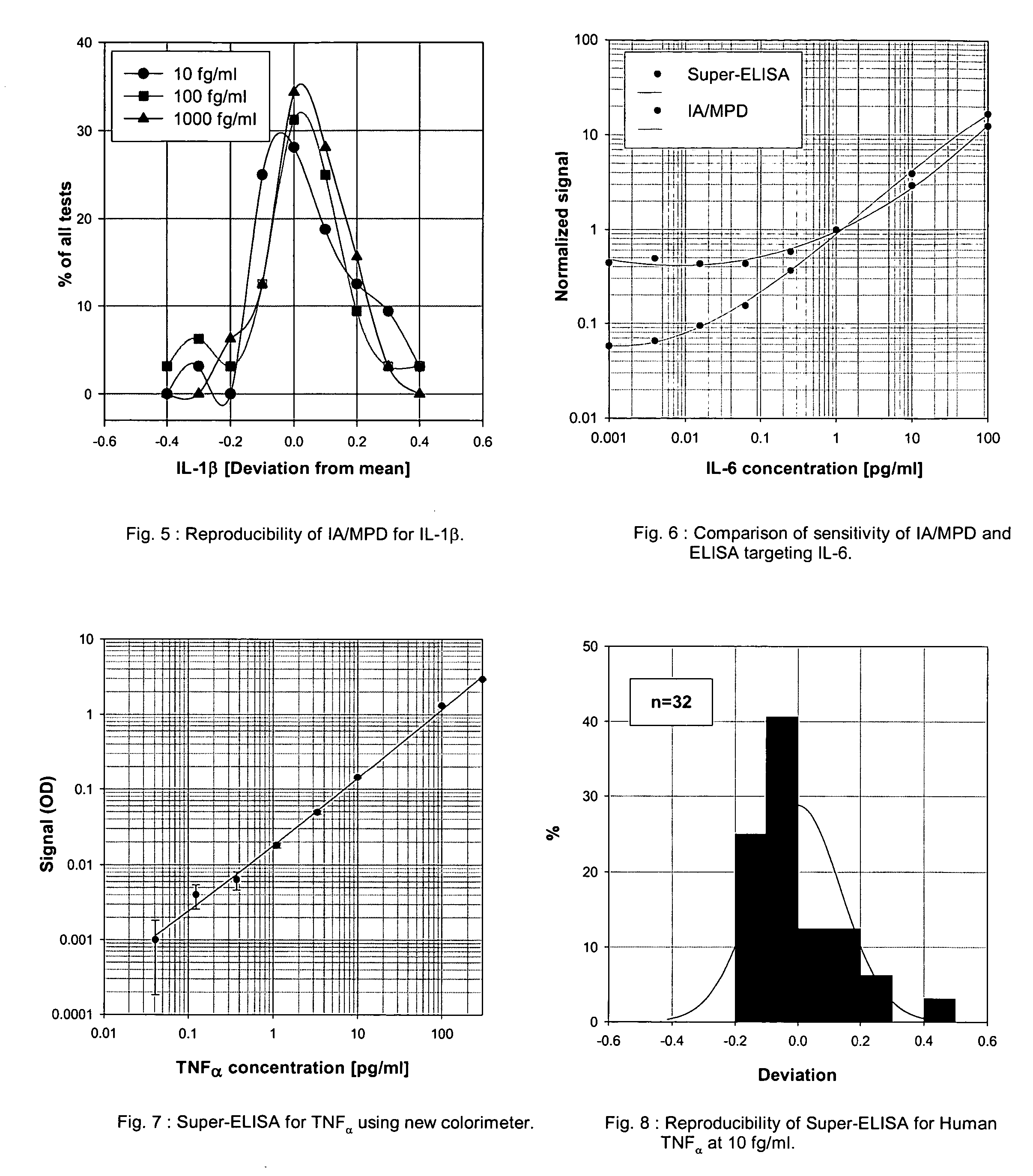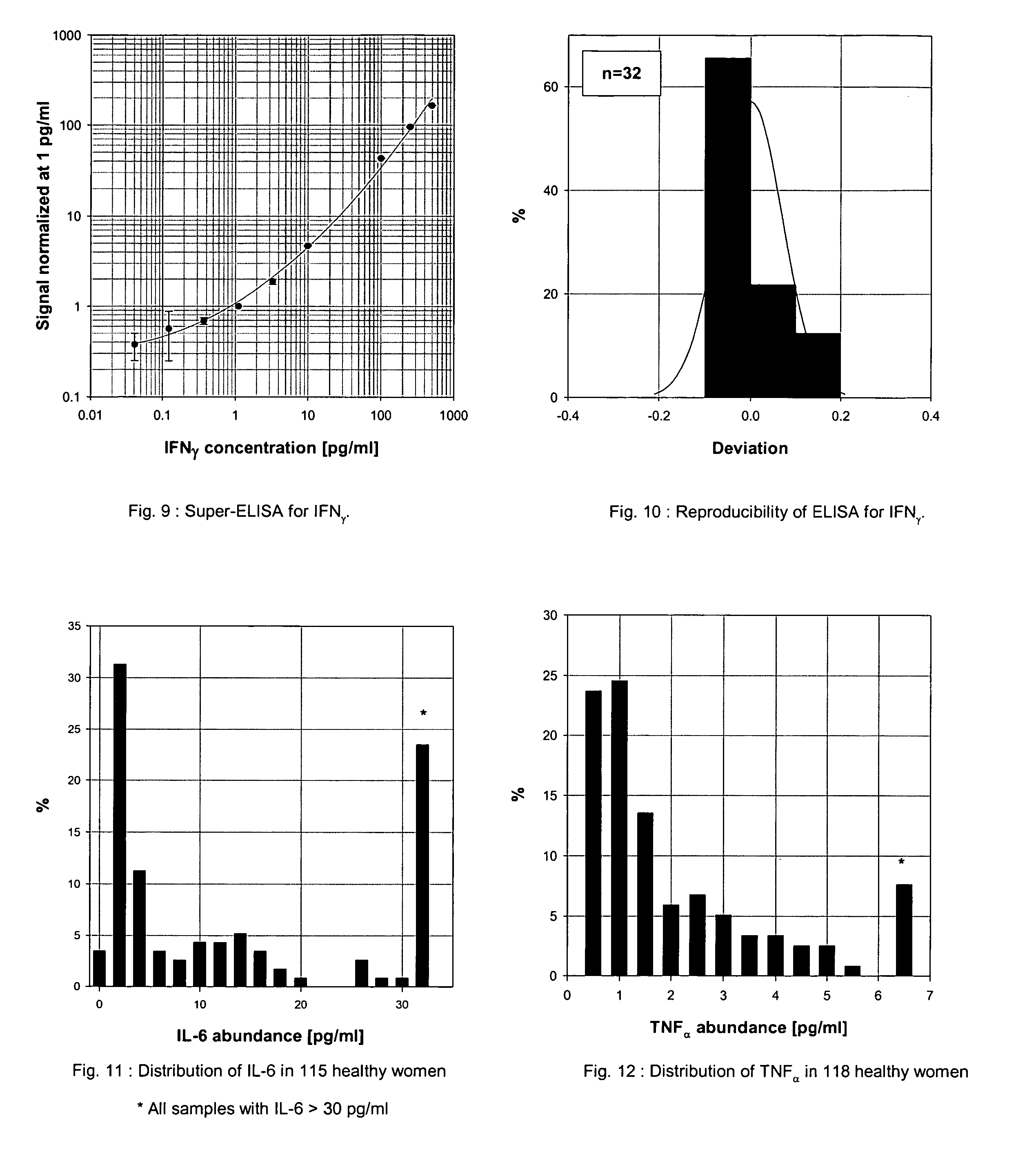Supersensitive immunoassays
a technology of immunoassays and immunoassays, applied in the field of supersensitive immunoassays, can solve the problems of difficult quantification, increased sensitivity, and difficult use of additional disease related biomarkers, and achieve the highest predictive power, improve the reliability of these diagnostics, and increase the specificity of diagnostics.
- Summary
- Abstract
- Description
- Claims
- Application Information
AI Technical Summary
Benefits of technology
Problems solved by technology
Method used
Image
Examples
example 2
Applications of Supersensitive Diagnostics Proteomics in Detection of Prostate Cancer
[0271] Prostate cancer is the most common cancer of men in the USA and is second to lung cancer as a cause of death in men. The American Cancer Society estimates that approximately 190,000 to 200,000 new cases of prostate cancer will be diagnosed each year and that approximately 30,200 men will have died of the disease in 2002. Once prostate cancer is advanced and becomes hormone refractory there is no effective therapy. There is currently no known effective way to prevent prostate cancer. Thus, early detection with local treatment provides the best chance to reduce the morbidity and mortality of prostate cancer. Five million diagnostic tests in the USA and ten million worldwide are performed per year. There are 250 thousand prostatectomies in the USA every year. About 20% of men with removed prostate die due to metastasis.
[0272] Early stage prostate cancer is detected by a digital rectal exam and...
example 3
Correlating Level of Cytokine and Leukemia
[0276] The IA / MPD permits better sensitivity in quantifying a plurality of cytokines; its ability to accurately measure trace amounts of cytokines potentially could change my understanding on how subtle changes in cytokine concentrations could alter an immune response to cancer. I obtained a series of important results concerning the relationship between the levels of IL-1beta, IL-6 and IL-10 with the prognosis of acute myelogenous leukemia (AML) patients. In this application, ELISA is clearly not sensitive enough. The results for IL-1beta are striking; about 70% of the 30 control samples show clearly measurable, though very low (beta is clearly suppressed and cannot be measured even with IA / MPD. The samples were measured blind and in duplicate. These preliminary data strongly suggest that IL-1beta may become an important cancer marker. I measured about 60 samples, including 30 from AML patients. My data suggest that it is necessary to furt...
example 4
Early detection of Alzheimer Disease
[0278] Alzheimer's disease (AD) is a major public health problem. It is the fourth leading cause of death in the U.S., affecting over 2.5 million individuals. There is neither a definitive test nor therapy for this disease, though recently a plurality of drugs showed promise in clinical tests. However, increasing understanding of role of tau and beta-amyloid proteins offers a new opportunity for developing a diagnostic test for AD.
[0279] Current tests for Alzheimer are mostly behavioral, i.e. can detect the AD only in late, symptomatic phase. It is expected that the initial stages of disease leading to mild cognitive impairment (MCI) appears at least 10 to 20 years before the AD symptoms appear. Recently, treatments had been developed which slow down the transition from MCI to AD. Thus, it is important to develop the low cost molecular diagnostics for MCI. Currently, some diagnostic tests for tau protein and beta amyloid are in initial evaluatio...
PUM
 Login to View More
Login to View More Abstract
Description
Claims
Application Information
 Login to View More
Login to View More - R&D
- Intellectual Property
- Life Sciences
- Materials
- Tech Scout
- Unparalleled Data Quality
- Higher Quality Content
- 60% Fewer Hallucinations
Browse by: Latest US Patents, China's latest patents, Technical Efficacy Thesaurus, Application Domain, Technology Topic, Popular Technical Reports.
© 2025 PatSnap. All rights reserved.Legal|Privacy policy|Modern Slavery Act Transparency Statement|Sitemap|About US| Contact US: help@patsnap.com



